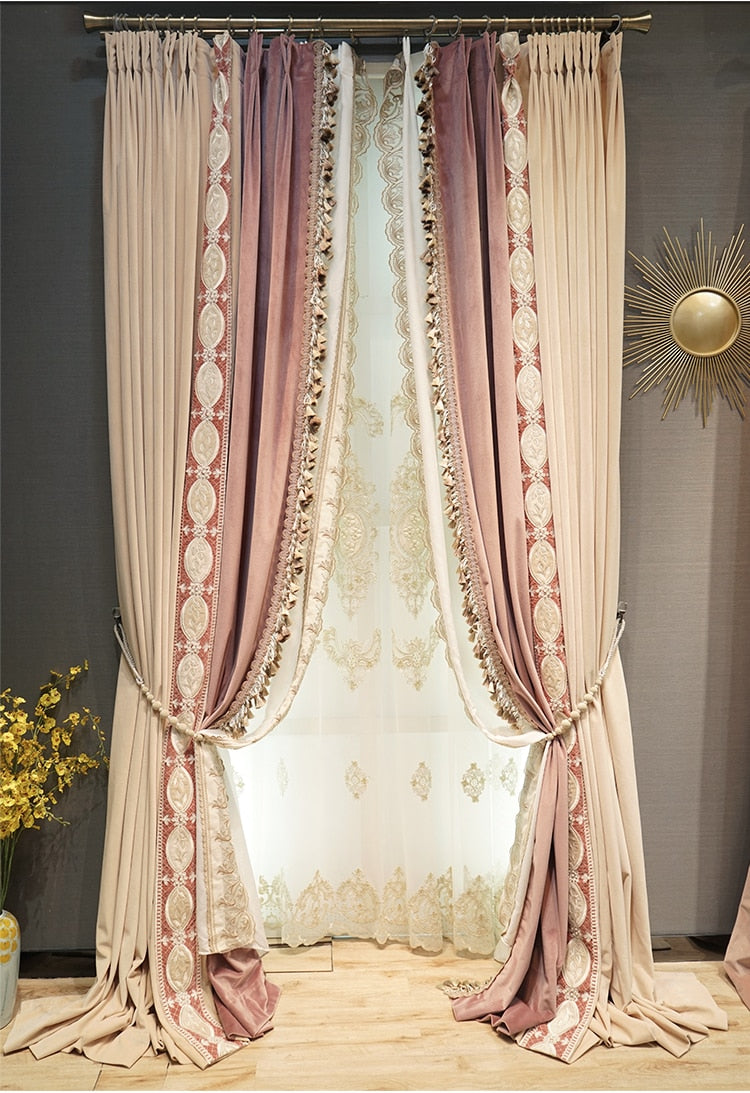Drapes, curtains, and Roman shades are all popular window treatments that serve both functional and decorative purposes in interior design. While they might seem similar at first glance, each option has distinct characteristics that cater to different needs and aesthetics. Understanding the differences between these window treatments can help you make informed decisions when decorating your space.
Let's start with drapes. Drapes, also known as draperies, are typically made from heavy fabrics such as velvet, silk, or brocade. They are often lined to provide insulation and light control, making them ideal for rooms where privacy and darkness are desired, such as bedrooms or home theaters. Drapes typically hang from a rod mounted above the window and extend to the floor, giving them a luxurious and formal appearance. They can be opened and closed using a pulley system, drawstring, or by hand, allowing for easy adjustment of light and privacy levels. Drapes come in various styles, including pinch pleat, goblet pleat, and rod pocket, allowing you to customize the look to match your decor.
Curtains, on the other hand, are generally made from lighter fabrics such as cotton, linen, or polyester. Unlike drapes, curtains are often unlined or lightly lined, giving them a more casual and airy appearance. Curtains come in a variety of lengths, including floor-length, sill-length, and cafe-length, making them suitable for different window sizes and styles. They are commonly used in living rooms, kitchens, and dining areas where a relaxed and inviting atmosphere is desired. Curtains can be hung from decorative rods or tracks and are available in a wide range of colors, patterns, and textures, allowing you to add personality and style to your space. They can be opened and closed manually or with a cord or wand mechanism, providing flexibility in light control and privacy.
Now let's explore Roman shades. Roman shades are fabric window coverings that stack evenly when raised and lay flat when lowered, creating a clean and streamlined look. Unlike drapes and curtains, Roman shades are typically made from a single piece of fabric that is pleated or folded into horizontal panels. They are available in a variety of fabrics, including cotton, linen, and bamboo, allowing you to choose the right option for your space. Roman shades are versatile and can complement a range of decor styles, from traditional to modern. They are often used in bedrooms, living rooms, and home offices where a combination of style and functionality is desired.
One of the key features of Roman shades is their ability to control light and privacy. They come in various opacity levels, including sheer, light-filtering, and blackout, allowing you to choose the right option based on your needs. Roman shades can be operated manually with a cord mechanism or motorized for added convenience. They offer a sleek and tailored appearance when raised and provide complete coverage when lowered, making them an excellent choice for rooms where versatility and sophistication are paramount.
In summary, the main differences between drapes, curtains, and Roman shades lie in their construction, fabric, function, and style. Drapes are heavy, lined window treatments made from luxurious fabrics and are ideal for formal spaces where elegance and privacy are desired. Curtains, on the other hand, are lighter, unlined window treatments made from a variety of fabrics and are suitable for a range of window sizes and styles. They are more casual and versatile than drapes and come in a wide range of colors, patterns, and textures. Roman shades are fabric window coverings that stack evenly when raised and lay flat when lowered, offering a clean and streamlined look. They provide excellent light control and privacy options and are available in various opacity levels to suit different needs. By understanding the differences between drapes, curtains, and Roman shades, you can choose the right window treatment to enhance the beauty and functionality of your space.







